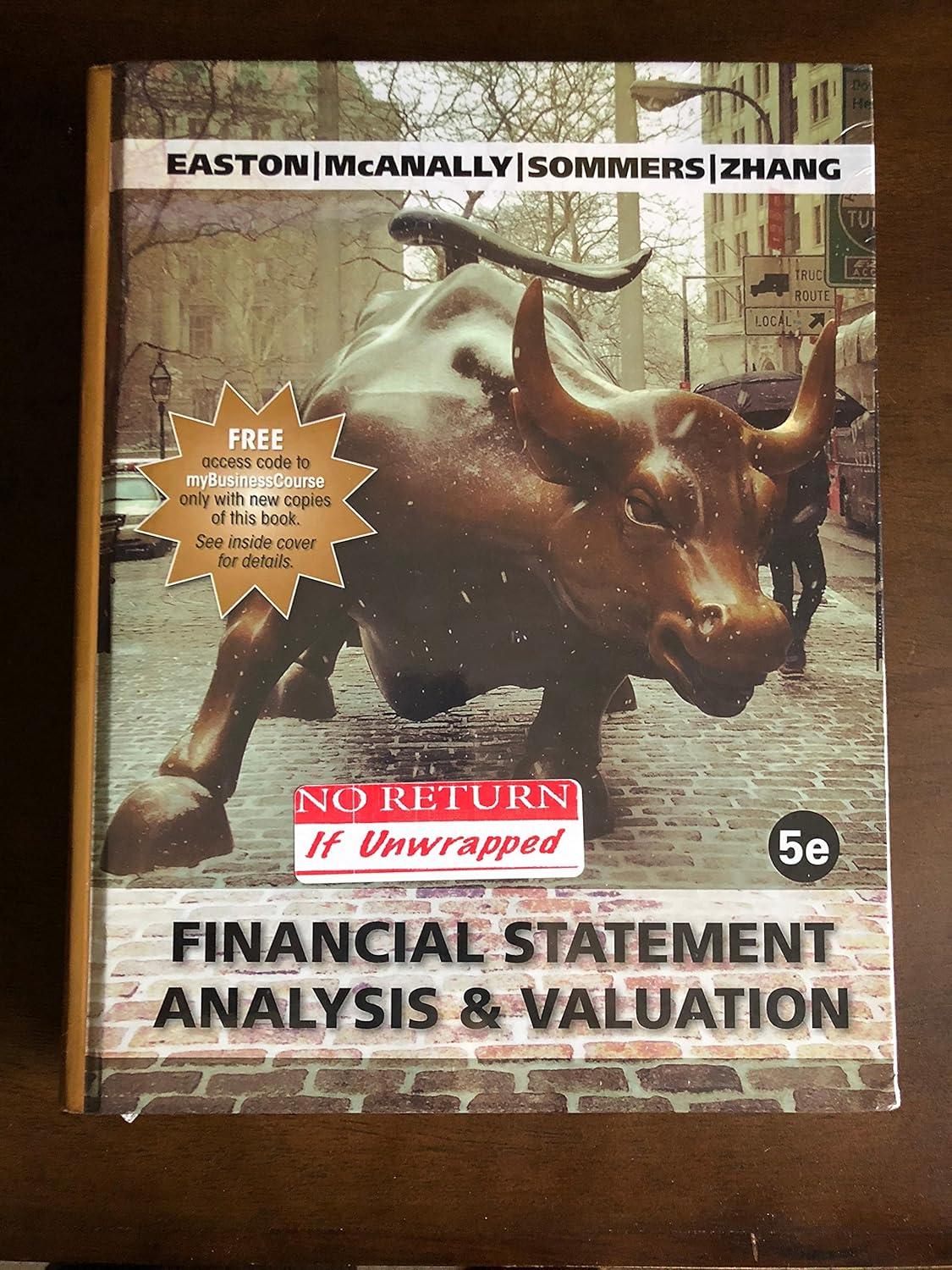Theoretical PE for Companies with Zero Expected Growth in Residual Income The cost of equity capital follows
Question:
Theoretical PE for Companies with Zero Expected Growth in Residual Income The cost of equity capital follows for each of five companies. For each company the expected growth in residual income is zero.
Company Cost of equity capital A . . . . . . . . . . . . . ????%
B . . . . . . . . . . . . . ????%
????. . . . . . . . . . . . . 12%
???? . . . . . . . . . . . . . 1????%
???? . . . . . . . . . . . . . 18%
a. Determine the theoretically correct PE ratio for each of the companies A through E.
b. In late 2007, approximately one-half of the companies on the New York Stock Exchange had a PE ratio between 12 and 48. Do you believe the range of those PE ratios is primarily related to differences in the cost of equity capital or to differences in expectations about future residual income?
Explain.
Step by Step Answer:

Financial Statement Analysis And Valuation
ISBN: 9781618532336
5th Edition
Authors: Peter D. Easton, Mary Lea McAnally, Gregory A. Sommers






